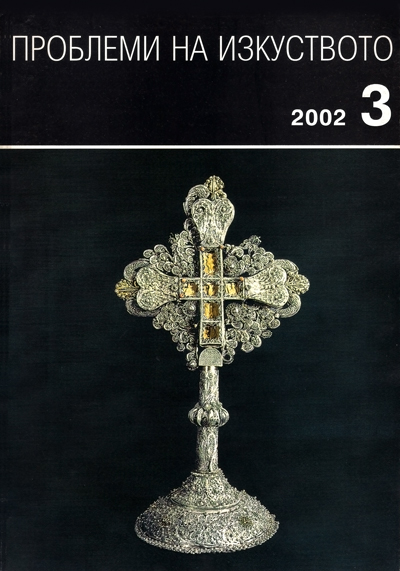
We kindly inform you that, as long as the subject affiliation of our 300.000+ articles is in progress, you might get unsufficient or no results on your third level or second level search. In this case, please broaden your search criteria.


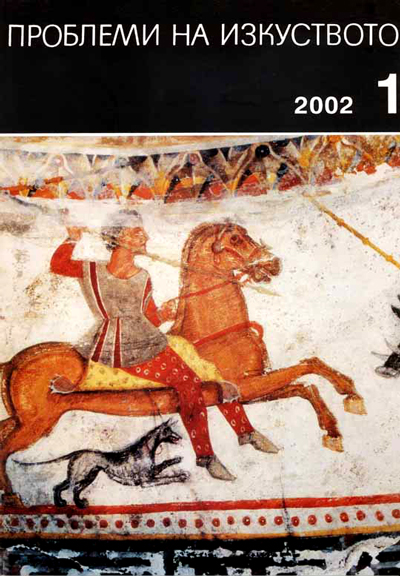
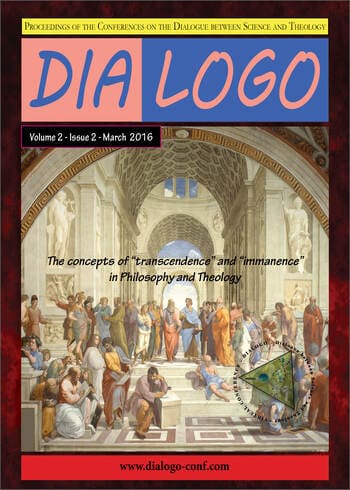
My assertion is that God’s biblical image may not reflect entirely His existence in itself as well as His revealed image. Even if God in Himself is both transcendent and immanent at the same time, and He is revealing accordingly in the history of humankind, still the image of God constructed in the writings of the Old Testament is merely the perspective made upon God by His followers to whom the He has revealed. That could be the reason why for centuries God’s biblical image seems to emphasize more His immanence, starting with Pentateuch, where God cohabites with Adam on Earth, then He reveals Himself to Abraham and Moses and so on. Somewhere, after the Babylonian exile, the image suffers slightly differences tilting towards God’s transcendence. In a path already created and grounded by Israel’s ancestors, even this new color of transcendence bears the nuances of immanence. How can this be possible? Let’s take a look on the revelation received by Abraham from God and see how this can fit the profile. Instead of the transcendence of God regarded by others in the differentness of Yahweh appointed by Abraham in his walking out of Mesopotamia, I will prove otherwise, that Abraham is on the contrary proving God’s immanency in this very differentness of His in relation with other gods by providence and omnipresence, indwelling His creation.
More...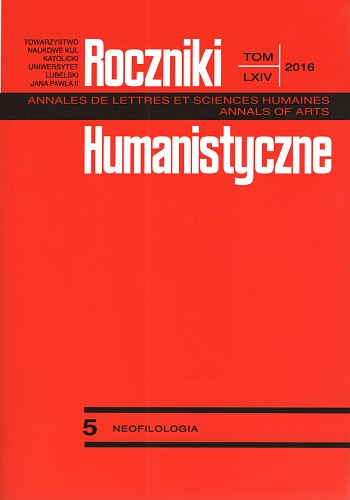
The objective of the paper was to articulate the gap between the medieval manuscript and its modern editions. It emphasises the need to study medieval texts in their natural context, i.e. against the manuscript codex as only then do they speak in full voice. While the usefulness of electronic editions is indisputable, a linguist working with a modern edition of a medieval text must be aware of how far it departs from the text it intends to represent. Therefore, wherever possible, it is advisable to examine manuscript scans which are now widely accessible on internet sites of the libraries housing manuscript resources. It is of paramount importance not only as a way of verifying corpus examinations but also because manuscript examinations complement the findings based on electronic data by offering invaluable clues encoded in the materiality of the manuscript. This postulate is relevant both for historical linguistic analyses and translation studies, and is equally valid for literary studies.
More...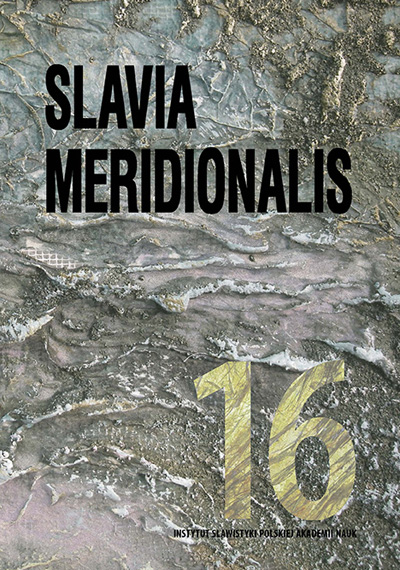
Rus’ in the Sixteenth Century Beginning in the mid-fourteenth century, the East Slavic citizens of the Polish-Lithuanian Commonwealth (“Ruthenians,” the “Rutheni”) took active part in a process of multicultural integration. The increase of interests in the biblical text that took place in Europe in that period was not without influence on Ruthenians – both those who remained Orthodox and those who became followers of the Reformation. The article discusses two outstanding figures: Matvej Ioannovič Desjatyj (the biblical codex of Vilnius and Supraśl, 1502–1507) and Francisk Skorina (Prague edition of 23 Books of the Slavonic Bible – Bivlija ruska of 1517–1520, the Vilnius edition of Malaja podorožnaja knižka – The little traveller’s book, 1522, and the Apostolos of 1525). The article also examines how the circle of the Ostroh Academy approached the task of preparing a print edition of the Slavonic Bible (1580–1581) and investigates the viewpoint of those who were influenced by Reformation ideas as well as that of those promoting the usage of prosta/rus’ka mova. This biblical production, which is only a part of the literary activity undertaken in Rus’, testifies to the high level of Ruthenian culture in the Polish-Lithuanian state and shows how Ruthenians were able to match their traditional spirituality with the philologia sacra of the Renaissance.
More...
Job 1:6 is one of several places in the Bible where God’s sons (celestial beings) are mentioned: “One day the sons of God came to present themselves before the Lord, and Satan also came among them.” Numerous commentaries of the Church Fathers were included in the Greek catena to the Book of Job. Some of these were not written specially as commentaries to this passage but are extracts from works commenting the nature of the angels, their place in God’s providence and their role in human life. The author then goes on to discuss the two Slavic translations that were made of the catena. The first one comprises the majority of the texts included in the Greek catena, while the second one contains only two small passages from commentaries of Saint John Chrysostom and Olympiodoros. The article provides a comparison between Slavic texts, which were translated from Greek in the Balkans at the same time: in the late fourteenth or early fifteenth century. Several miniatures from medieval Greek manuscripts, which illustrate the Celestial symposium, are represented at the end of the article.
More...
This article presents a hitherto unknown catena to the Psalter. It is divided in two parts, placed in two manuscripts: in Manuscript No. 116 (psalms 1 through 76), and in Manuscript No. 117 (the remaining psalms). The catena contains commentaries of more than 15 Byzantine authors. The article then goes on to compare the Psalter text accompanying the catena with texts of other editions. It becomes clear that the text of the Hilandar manuscripts is very close to the texts of the Mount Athos edition and of Cyprian’s edition, although it has its own characteristics. The newly found catena is the most voluminous catena translated into a Slavic language. The discovery of the text will lead to new researches into the history of the Slavic Psalter and the Slavic translations of the Bible.
More...
The object of the current research is Talkovanie na Kniga na propok Daniil – the Slavonic version of the Commentaries on the Book of Prophet Daniel (Commentarii in Danielem, CPG 1873) by Hippolytus of Rome (c. 170–235), the earliest and most profound commentaries on this Old Testament book. They were written round 204 and their translation into Old Bulgarian can be counted among the earliest works of Bulgarian literature. The time of the Commentaries’ translation is under discussion, its dating ranging from the last decades of the ninth to the middle of the tenth century. Some linguistic facts of the Commentaries have sporadically been compared with the partial translation of the Book of the Prophet Daniel, included in the Prophetologion. Also, some comparisons have been made between the Slavonic translation of the Commentaries and the so-called Talkovni proroci – a translation of Old Testament books of prophets with commentaries. The analysis is based on a 1519 manuscript of the Commentaries (No. 486 from the Volokolamsk Collection, Russian State Library, Moscow), which follows the tradition of the earlier copies and most profoundly keeps the content of the Commentaries. In addition to morphological particularities, in the text there are many lexical idiosyncrasies, which can facilitate the dating and localization of the translation. Among these lexical markers can be singled out which show more interesting data. Many lexemes can be found which are particular to the early written codices and testify to the antiquity of the translation. For instance, some specific lexemes match with words, used in the Codex Suprasliensis and the First Miscellany of Tsar Simeon (Izbornik of 1073), which shows that the Commentaries are one of the earliest translated works of the Old Bulgarian literature.
More...
In the Church Slavonic literary tradition, Theophylact of Ohrid is mostly associated with his exegeses to the Bible. The collections of Cyrillic manuscripts in Poland include only a single copy of his annotated Book of Gospels (BN 12431 III, beginning of the sixteenth century), which has not yet been the subject of a separate study. The book is particularly interesting and valuable, as it contains archaic linguistic features, proving that it is an extremely old copy of the first Slavonic translation of the work. This is an important example of the presence of manuscripts related to Old East Slavonic, and also indirectly – Old Church Slavonic literary tradition in the former Polish-Lithuanian state. The article gives a codicological and linguistic characteristic of this manuscript, and its primary aim is to draw attention to the manuscript from researchers of the works of Theophylact of Ohrid, the Church Slavonic literature, and the Bible.
More...
Based on a manuscript by St Maxim the Greek, this article explores his specific understanding of the relationship between language and biblical tradition. It gives some answers to questions concerning his theology, which are posed by his liturgical experience of the sacred time, which is based not on repeating the excerptions from the patristic authors, but is primarily founded on his accurate reading and in-depth perception of the Holy Bible. Maxim the Greek, who in his personal writings showed a detailed knowledge of both the Old Testament and Slavonic biblical texts, was thus not only able to separate the canonical from the non-canonical sacred texts, but also successfully classified the Christian teachings according to ethical value, from the Old Testament prophets to the apostles and the Church Fathers. With his hierarchy he also gave meaning to the ontological-eschatological dimension (three levels – appropriate to the Holy Trinity) of their spiritual efforts. His knowledge, which also reflects the precise understanding of dogmatic theological decisions of the first ecumenical church councils, ranks highest the learning that comes directly from the Son of God, which Maxim the Greek experienced through his theological-liturgical prayer practice. Maxim found theologically unambiguous formulations which most profoundly determined the specific nature of his personal theology in the Byzantine hymnography dedicated to the Mother of God. All the mentioned facts lead the author to the further explore his specific Old Church Slavonic language, in which he managed to preserve not only the early Christian mentality but also the theological-liturgical characteristics of the ascetic and later monastic discipline that he learned in the monastery of Vatopedi at the Holy Mount Athos. The article concludes with the proposition that only through detailed study of the personal language of St Maxim the Greek can we arrive at a definition of his Theology.
More...
The Eulogy is an original Bulgarian work of an as of yet unidentified man of letters connected to the sixteenth-century Sofia Literary School. It is preserved in only one copy from the collection of Slavonic manuscripts of the Institute of Church History and Archives in Sofia. The work is dedicated to the martyrdom of three martyrs against Islam: George the New Martyr of Sofia, George the Newest Martyr of Sofia and Nicolas of Sofia. The article aims at analysing the whole inventory of composite words, their structural features and semantic profile, used to express the basic concepts of the Biblical paradigm, as well as holiness and martyrdom.
More...
The present paper is dedicated to the symbols of musical culture in semiotic and cultural discourse, as reflected by the category “cultural artefacts” (musical instruments) in the Bible. At the same time, it is as an attempt to demonstrate the literary critical and musicological potential of the problem. The category “musical instruments” in biblical texts has been discussed in a historical perspective. Another issue analysed in the paper are the rhythmic and metric structures of Byzantine and Bulgarian hymnography. Both these questions are viewed from the perspective of musical and poetical homology in Bulgarian symbolist poetry, specifically in the lyric poetry of Nikolay Liliev, and of the connections of Orthodox hymnography with broadly understood musicality of poetry.
More...
The article examines the first biblical couple as a tool for comparative analysis of the modernist tendencies of Bulgarian novel in the period between the two World Wars. The research focuses on works by Chavdar Mutafov, Anna Kamenova, and Dimitar Dimov, along with examples taken from French and Romanian literary pieces as representatives of the wider, European history of ideas. In the image of Creation, but also the image of the original sin, Adam and Eve are of interest because of their unity, which eventually becomes the basis of the Christian family after they leave the Garden of Eden. The borders of the model given in the Bible are breached with the introduction of a new reading – the figures of Creation can now also be seen as figures of salvation. The knowledge gained by the existing studies of myth in European literature thus becomes the foundation for a revision of the hitherto selective interpretation of works by the Bulgarian novelists. The point of intersection between the different approaches towards the first couple is their arduous integration into the surrounding world, and adaptation to the passage of time. Another prominent feature is the discussion about the possible development of the model; the newly introduced definition of salvation that comes after Creation and the fall of man.
More...
The twentieth century has become in a special way a time of reflection on the theological roots of human thinking, including thinking in political terms; suffice it to mention such names as Walter Benjamin, Carl Schmitt and Erich Voegelin. One of the thinkers who joined the ongoing disputes was Philip Rieff, who in his book My Life Among the Deathworks (2006), took on the task of a controversial (according to many) revitalization of the Judeo-Christian paradigm. Reflecting on the subject of art works over several centuries, he abstracted typological criteria allowing him to build a dichotomous model of art, as dedicated either to death (the non-Judeo-Christian variety) or to life (the Judeo-Christian variety). The paper attempts to verify his reasoning by reflecting on the theological models of humanity and spiritual progress in Teodora Dimova’s novel The Train to Emmaus (Vlakat za Emaus, 2014).
More...
This study analyzes the concept of religious sacrifice in the Bible, highlighting its essential role in the spiritual and communal life of the Israelites. Sacrifice is examined as a complex ritual, grounded in the idea of social reciprocity, where the offering of divine gifts reflects devotion and loyalty to Yahweh. We explore the types of sacrifices, emphasizing that they range from food and drink offerings to animal sacrifices, each carrying specific symbolic meanings. The study also investigates the meanings and functions associated with sacrifices, including the importance of the act in the context of community and relationship with divinity in the New Testament. In conclusion, sacrifice in the Bible is not merely a ritual of worship, but an essential instrument for maintaining social and spiritual bonds, reflecting the complexity of the relationship between humans and God.
More...
The Orthodox Church is spiritually revived through the power of prayer, sustained by the service of bishops, priests, monks, hermits and all her faithful people. Prayer, the existential foundation of the faithful, unceasingly renews the spirituality of the Church, reflecting in the diversity of forms of prayer the breadth of the spiritual life. Central is the essential prayer that resounds in the words "Well will I say the Lord at all times, his praise always in my mouth" (Psalm 33:1), manifesting the gospel in its living and authentic form. St. Isaac the Syrian emphasizes this as the "praise of the Church of Christ," highlighting a multifaceted spiritual practice that includes monasticism as a sanctuary where doctrines and devotions are preserved in unadulterated forms. Monastic chant, a subtle but profound element of this spiritual ecosystem, illuminates and challenges with the light of Christ. Through prayer, the Church not only communicates with God, but also spiritually transforms human beings, extending the prayer of the heart to the whole of creation. The spiritual fathers outline three progressive stages in the life of prayer and Christian perfection, as St. Basil the Great summarizes. These stages involve the journey of the mind from an outward movement to God, to introspection, and finally, the ascent of the soul itself to God. Each stage signifies a deeper integration of the spiritual into everyday life, culminating in the direct and direct encounter with God, overcoming the need for images or conceptual forms. This transformative prayer practice leads to a deep inner unity, echoing the teachings of the Psalmist and the Fathers of the Church, manifesting itself as a joyful devotion and love to God. By maintaining sustained attention and the virtues of temperance and patience, this transformative engagement with the Divine is maintained, deeply embedding the prayer of the heart into the fabric of daily existence.
More...
The Song of Mary, known as the "Magnificat", as recounted in the Gospel of Luke, addressing its poetic structure, theological themes and social implications. The analysis highlights how Mary expresses her gratitude and praise for divine intervention in her life, while also emphasizing the prophetic aspects of the hymn that foreshadow a divine order of justice and mercy. The central theme of the work is the reversal of social orders—the raising of the humble and the lowering of the mighty—which reflect the nature of God's kingdom as described in Jesus' teachings. The hymn is discussed not only as an expression of Mary's personal experience, but also as an echo of Old Testament promises and a vision of the universality of salvation. The "Magnificat" is presented as a profound eschatological and theological text that articulates the continuing hope in the fulfillment of divine promises for all nations, marking a defining moment in Christian literature and biblical spirituality. This work emphasizes the continued relevance of the Song of Mary as a source of theological inspiration and a model of divine and social engagement for believers of all times.
More...
The power of prayer as an essential practice in the development and support of individual and community spirituality in different cultural and religious settings. By applying an interdisciplinary methodology, which combines theology, psychology, sociology and cultural anthropology, the study analyzes the impact of prayer on mental and physical health, as well as its role in promoting resilience and social cohesion. Particular emphasis is placed on comparing prayer practices between various religious traditions, exploring how they influence practitioners' perceptions, behaviors, and spiritual experiences. The article discusses the results of recent research and introduces new empirical data to argue how prayer works as a catalyst for personal and social transformation. Finally, the implications of these findings for contemporary spirituality theory and pastoral practice are outlined, highlighting the need for a more integrated and contextualized approach to prayer in modern interdisciplinary studies.
More...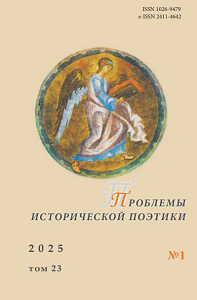
In the screenplay “The First Russians” (“Pervorossiyane,” 1965), Bergholz reinterpreted the history of the creation of the first Russian agricultural commune in Altai by St. Petersburg workers, which she first creatively mastered in the poem “Pervorossiysk” (1950). She filled the text with biblical symbols, mythopoetic images and new characters. The place where the relocated workers choose to create a commune is described in the text as a “legendary valley” with “biblical cedars” which in the Psalter are associated with the righteous. Biblical allusions can be traced in the image of Uncle Lesha the cannon founder, who escorted the migrant communards on their way: according to the description, the worker resembles the god of Нosts (Sabaoth), who sends his heavenly messengers into the world. Obsessed with the idea of social justice, the First Russians die as martyrs for it: the scenario is permeated by the metaphor of the bonfire, which establishes a connection with the figure of the Old Believer Protopope Avvakum. The spiritual make-up of the communards is reflected as in a mirror in the “iconographic face” of Efimiya, the daughter of the Old Believer Theodosius, who opposes the First Russians. The idea of the commune as an ideal social structure is comprehended by Bergholz through the Kitezh concept. St. Petersburg workers, drawing a plan of the future settlement of Novorossiysk, see it “through the water.” Novorossiysk, set on fire by the Cossacks, appears to the communard Vasily Gremyakin submerging into a reservoir, just as the mythical Kitezh-grad descends into the waters of Svetloyar Lake. The text illustrates the integration of the author’s religious and mythological consciousness with the communist worldview. Bergholz builds a national image of the world built around the Christian worldview and the Soviet model of social justice. The analysis is carried out using Bergholz’s diary entries and the transcript of the script discussion meeting at the “Lenfilm” Studio. Bergholz’s informative notes from the period of her work on the script and a transcript containing a polemic about biblical allusions in the text allowed to place more precise accents in the interpretation of the work.
More...